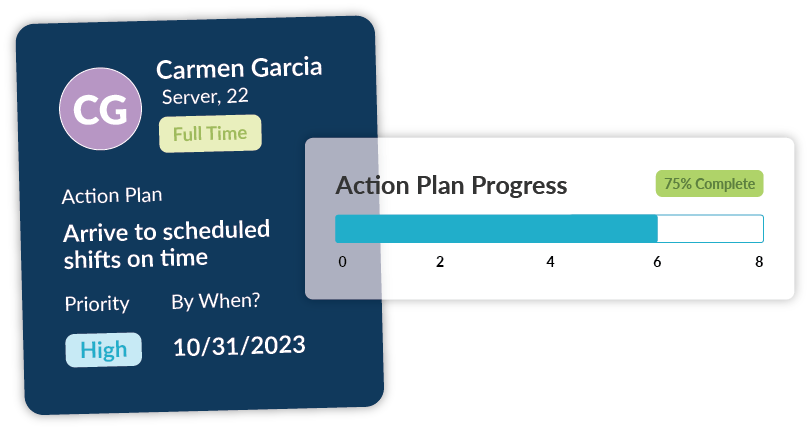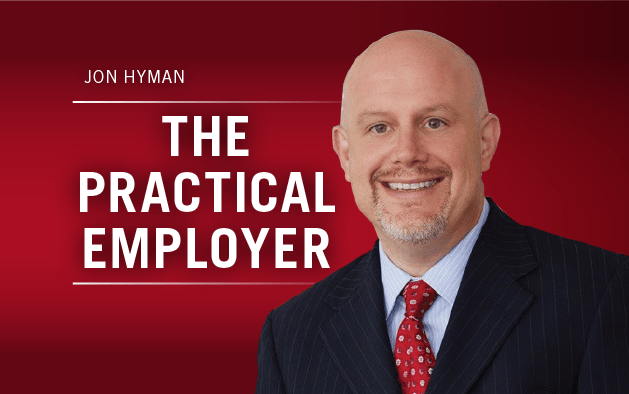Summary:
-
A Performance Improvement Plan (PIP) is a road map for employees to improve on performance issues. Its primary goal is to help underperformers do better.
-
Use this free template to get started with drafting a PIP.
-
Performance management software can help you quickly build and execute PIPs.
Performance Improvement Plans (PIP) often elicit mixed reactions in the workforce. Some view them as a precedent to termination, while others perceive them as an opportunity to improve and grow. This guide will shed light on the truth about PIP, what it’s for, its significance, and how to navigate it effectively for workforce development and success.
What is a Performance Improvement Plan (PIP)?
A performance improvement plan (PIP) is a part of performance management that involves a formal document to track employee performance in specific areas where they are underperforming. It’s not disciplinary action per se, but a way for employers to assist employees in improving their performance and overcoming performance deficiencies.
Get a free PIP template by clicking the link below:
Performance Improvement Plan [Template]
While often viewed as a precursor to terminating an employee, implementing a PIP is actually done for retention. It provides an action plan with clear direction on what an employee should do to perform better in their role.
A PIP also provides documentation in case an employee fails to meet the metrics in the performance plan, which can be used as grounds for dismissal. But again, the primary goal of a PIP is to help employees succeed and prevent turnover in the first place.
What should a PIP include?
To be effective, a PIP should be able to provide clear expectations and structure. It should outline relevant goals and give timelines for when these goals should be completed.
An employee performance plan should include the following:
- Itemized areas that need improvement
- Goals that employees need to meet. These should be SMART — specific, measurable, achievable, relevant, and time-bound.
- Specific action items that employees must take to improve their performance
- Metrics to measure progress
- A timeline and clear expectations for when goals should be accomplished
- Support that the employee can expect in terms of training, coaching, and additional tools that can help them with attaining the goals
Who’s responsible for enacting a PIP?
Human resources typically oversees the filing and management of performance improvement plans, while an employee’s manager usually determines the need for a plan and carries out the execution. Because PIPs are usually received negatively, it’s crucial to determine if this is the appropriate course of action. The HR team also has an essential role in spotting potential biases guiding managers and employees as an intermediary party. If the need for a PIP is substantiated, the manager will draft the plan, and HR will review it accordingly.
Meanwhile, other organizational stakeholders may also be involved in reviewing the PIP. It’s best if they are not directly involved in the situation so that they can review the plan with fresh eyes, ensure objectivity, clarify potential vague areas, and ensure there’s no potential risk of unintentional discrimination.
When must a PIP be implemented?
In some organizations, PIPs are used as proactive training measures for every employee, especially when there is potential for upward mobility. In this case, PIPs can be implemented on a regular basis, typically at the beginning of a new quarter.
However, if you are reactively using PIPs as a response to poor performance, you’ll want to hold off on implementing them until patterns in underperformance emerge. PIPs are usually not the first course of action for performance issues – they typically come later in the evaluation process after notices and verbal warnings have been issued.
At the first sign of a performance issue, managers typically confer with the concerned employee to notify them and provide initial coaching. If the issue persists, it can escalate to the verbal and written warning stages. The implementation of PIP usually comes at the written warning stage, where action steps and progress need to be documented.
What are the steps to implementing a PIP?
Executing a PIP is not a simple task. It involves careful investigation and clear communication. To get you started, here’s a quick rundown of the steps involved in the process:
Identify the root cause
First, you need to understand what’s causing poor work performance in order to set relevant goals.
If the performance lapse is around their tasks, identify if there’s a lack of training. Did the employee receive enough coaching? Is there adequate onboarding? Do they have access to training tools and materials?
Meanwhile, if the issue concerns attendance, you can look at your time and attendance system to spot patterns and other indicators in their timesheets and leave records. For instance, if the employee tends to be late or absent on a particular shift or schedule, try to determine why. Sometimes, it’s not necessarily the lack of training, but it could be something personal that the employee is going through.
Inform Human Resources
If an employee requires a PIP, you need to inform HR about it. Present the facts and why you came to that recommendation. If they deem a PIP necessary, you can begin by telling the employee and proceeding with a draft.
Get the employee involved
No employee wants to hear they need to improve their performance, so you must be clear, calm, and helpful when delivering the news.
Focus on the facts. Explain why a PIP is necessary and be clear about your intent to help them succeed. Reiterate that while termination may be an outcome if the plan doesn’t yield results, implementing a PIP actually presents an opportunity to not only fix performance but to go above and beyond expectations. A PIP could be the first step towards eventual promotion.
It’s also vital to involve them when devising the plan. Doing so allows you to see things from their perspective, which helps design challenging yet attainable goals. It also gives you insight into how they execute tasks and see areas where you can provide support. Ultimately, involving them sends the message that the plan is made for them and not against them.
Create the plan
A PIP should provide clarity and structure around goals, timelines, scheduled check-ins, and training.
An effective PIP begins with SMART goals — specific, measurable, achievable, relevant, and time-bound. For instance, simply saying, “David must improve performance,” is insufficient. Instead, involve a time frame and a quantitative goal, like: “David should not commit more than three kitchen-related errors in 30 days.”
Furthermore, you must include a schedule for regular check-ins to track progress. This will open up the floor for communication and feedback. Use this time to see if they need additional support or if they have clarifications. In addition, consider conducting temperature checks. In some cases, employees may accept the PIP, but in reality, they use this to buy time before they jump ship to another organization. So check-ins are an excellent time to gauge whether an employee is still in it to stay or just doing it to delay their departure from the company.
An effective PIP must include goals and schedules as well as the type of training and support the employee can expect from the company. While the goal is for the employee to carry out the PIP, the manager is responsible for providing assistance, support, and training.
Sometimes, training can be as simple as shadowing another team member excelling in a similar role. The PIP documentation should include whatever training and support is agreed to.
Let other people review the plan
Aside from asking for feedback from HR, consider sharing the plan with other managers not directly involved in the situation. This will help strengthen it in terms of objectivity and attainability. In addition, it also doesn’t hurt to ask your legal team to review it.
While this additional step takes time, it’s important to somehow “stress test” the PIP as this can help it be more effective and avoid any vagueness or potential liability down the line.
Track and evaluate progress
Evaluate the employee’s progress through regular check-ins and performance reviews. This will help you gauge whether the PIP process is working.
If the employee could meet performance goals ahead of the set completion date, it would be advisable to continue the planned plan instead of ending it prematurely. While it’s good that the employee could bridge the gap fast, keeping the PIP going until the set end date is optimal to ensure that the employee can remain consistent.
On the other hand, if the employee seems to be progressing but not at the expected pace, look at what’s causing the delay. Evaluate whether extending the timeframe makes sense or if additional training is needed.
Improve your improvement plans
Executing a PIP is not an appealing prospect for managers because it’s a tedious process. It could also be an emotional ordeal, especially since it can result in termination. The good news is that some tools can help make some areas of implementing a PIP more manageable.
Workforce.com is an all-in-one system for the entire employee lifecycle, from onboarding to payroll. Alongside an extensive performance management module, Workforce.com includes time and attendance, employee scheduling, demand-based labor forecasting, payroll, and a full HRIS suite.
Schedule performance reviews and execute action plans in an easy-to-use system tied to your scheduling and attendance data. This means you can quickly review information such as timesheets, punctuality and attendance issues, leave data, and even shift feedback all within the same system. Anchoring your performance management to operational data like this will always give you the complete picture.
Streamline your performance improvement planning by booking a call with us today.





 “Our interns are assigned unique and necessary problem-solving projects that allow them to work closely with company leaders and foster their professional development.”
“Our interns are assigned unique and necessary problem-solving projects that allow them to work closely with company leaders and foster their professional development.”







 Making sure to include remote employees in meetings and scheduling regular check-ins is also vital for creating an inclusive environment and tracking progress, according to Carlos Castelán, managing director of business management consulting firm The Navio Group. If remote employees aren’t provided with clear expectations and direction, it can be easy to feel like they are stranded on an island. Those who work remotely need to feel a sense of purpose in order to stay motivated and passionate about the company’s goals. “One of the hardest parts of staying motivated as a remote worker is fully grasping how your contributions fit into the overall picture and mission,” Castelán said.
Making sure to include remote employees in meetings and scheduling regular check-ins is also vital for creating an inclusive environment and tracking progress, according to Carlos Castelán, managing director of business management consulting firm The Navio Group. If remote employees aren’t provided with clear expectations and direction, it can be easy to feel like they are stranded on an island. Those who work remotely need to feel a sense of purpose in order to stay motivated and passionate about the company’s goals. “One of the hardest parts of staying motivated as a remote worker is fully grasping how your contributions fit into the overall picture and mission,” Castelán said.

